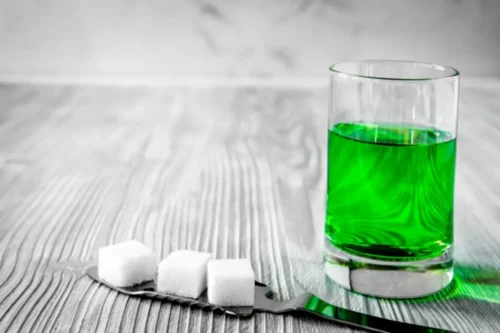
While both conditions can lead to serious health and social issues, alcoholism includes an addiction component that makes it particularly challenging to overcome without professional help. Treatment options, such as FDA-approved medications naltrexone, acamprosate, and disulfiram, are available to support individuals in reducing or stopping their alcohol intake and preventing relapse. Psychologically, alcohol abuse can lead to mood disturbances, sleep problems, and the development of mental health issues like depression and anxiety. The brain’s stress and emotion regions, such as the amygdala and the ventral and dorsal striatum, are affected, which can alter behavioral control and self-regulation of stress and emotions. These changes can contribute to increased alcohol craving and intake, escalating to risky drinking behaviors. Alcohol abuse, as delineated by the National Institute on Alcohol Abuse and Alcoholism (NIAAA), refers to a pattern of drinking that results in significant and recurrent adverse consequences.
- If you have been consuming alcohol heavily for an extended period, quitting on your own has the potential to be dangerous.
- Finding a community of your peers who are also trying to get sober can help provide support during early recovery.
- Many of the effects of drinking every day can be reversed through early intervention.
- Therefore, individuals regularly consuming drinks in excess of these guidelines may be defined as abusing alcohol.
What Is An Alcohol Use Disorder?
Combined with medications and behavioral treatment provided by health care professionals, mutual-support groups can offer a valuable added layer of support. This is a chronic, lifelong disease in which the body is physically dependent on alcohol in order to feel “normal”. Any reduction in alcohol intake is likely to result in withdrawal https://ecosoberhouse.com/ symptoms. A person struggling with alcohol dependence will usually drink daily and need help to stop drinking. Although these terms are often used interchangeably, they have distinct differences. It’s possible to abuse alcohol without being an alcoholic, while alcoholism typically involves an addiction to the substance.
How is Alcohol Use Disorder (AUD) Diagnosed & Treated?

From a psychological standpoint, alcoholism can lead to cognitive deficits, memory loss, and emotional disturbances. It can exacerbate mental health issues and increase the risk of developing certain types of cancer. what is the difference between alcohol abuse and alcoholism The nervous system can also bear the brunt of prolonged abuse, with conditions such as neuropathy and an increased likelihood of developing Wernicke-Korsakoff syndrome, which affects movement and memory.

Physical symptoms of alcohol misuse

Key symptoms of alcoholism include a strong craving for alcohol, a lack of control over alcohol intake, and physical dependence, which leads to withdrawal symptoms when not drinking. Understanding the distinction between alcohol abuse and alcoholism is crucial for identifying the severity of an individual’s alcohol-related issues. Notably, alcohol abuse does not necessarily involve physical dependence or a compulsive need to drink. Discerning the distinctions between alcohol abuse and alcoholism is a vital step towards seeking appropriate treatment and understanding the complexities of each condition. Both can severely impact an individual’s health and wellbeing, but they call for customized approaches when it comes to intervention and recovery. If you or someone you know is dealing with these challenging issues, professional help is key.
- While the two are no longer differentiated in the DSM, understanding their original definitions can still be helpful.
- While 1 in 3 adults reports excessive drinking, only 1 in 30 is actually alcohol dependent.
- Getting help before your problem drinking progresses to severe alcohol use disorder can save your life.
- CBT helps you modify your thoughts and actions, while also learning alternative coping mechanisms.
Signs and Symptoms of Alcohol Abuse
Alcohol abuse can lead to Alcohol use disorder (AUD), a medical condition characterized by an impaired ability to stop or control alcohol use despite the negative social, occupational, or health consequences. The Diagnostic and Statistical Manual of Mental Disorders, Fifth Edition (DSM-5), provides criteria for diagnosing AUD, which includes a spectrum of behaviors from mild to severe. Alcoholism is influenced by a number of hereditary and environmental factors. For example, if you’re genetically predisposed to addiction, you may be more likely to struggle with alcoholism. But regardless of your genetic makeup, excessive drinking can also lead to a self-perpetuating cycle of alcohol abuse, triggering physiological changes that cause a dependence to form. Left untreated, alcohol abuse can quickly progress to a full-blown alcohol addiction.

- It was written based on peer-reviewed medical research, reviewed by medical and/or clinical experts, and provides objective information on the disease and treatment of addiction (substance use disorders).
- Of course, these categories offer only guidelines, not hard-and-fast criteria.
- If you’re concerned about someone who drinks too much, ask a professional experienced in alcohol treatment for advice on how to approach that person.
- This question doesn’t always have a straightforward answer, since every person has their own limit when it comes to alcohol.
- Alcohol use disorder (AUD) is a significant health concern that affects individuals across different age groups and genders.
